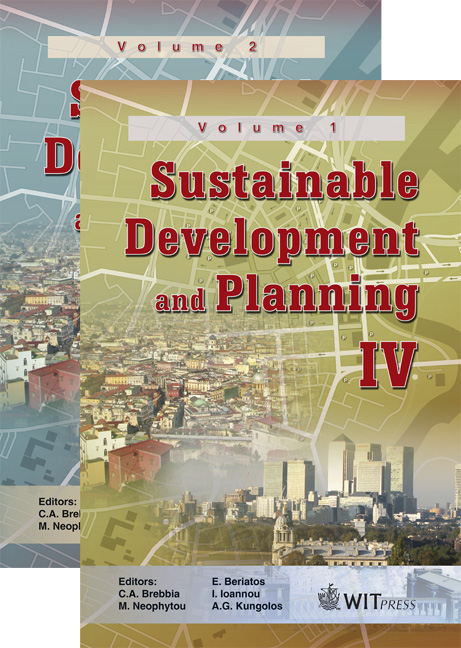Vast Vicinity: Learning From Essential Settling And Dwelling
Price
Free (open access)
Transaction
Volume
120
Pages
13
Page Range
339 - 351
Published
2009
Size
4978 kb
Paper DOI
10.2495/SDP090331
Copyright
WIT Press
Author(s)
H. Göritz
Abstract
'Sustainability' is the word of our time. 'Sprawl' is a problem of our time [1]. Apparently, given its full extent, housing based on individualistic image still sells better than rare sense for design appropriately fit to context and task. Thus, the notion of 'dwelling and settling' has extreme negative impact on the relationships between urban, rural, garden and house. Accounting for populist aesthetics, value-price-confusion, and prevailing land politics, the trivial and contradictory questions of principle remain: 'rural or urban?' - 'garden or house?' This paper explains an architectural research on the symbiotic propositions of settling with 'houses as gardens'. Working with the idea of 'as-well-as' instead of 'either-or' is a cardinal principle of this approach. The principle 'from the part to the entirety' is what defines these designs as 'urban modules', which have the potential to generate a truly coherent mosaic that constitutes a different settlement pattern that proposes an urban as well as rural future. It holds the promise of a way of settling and dwelling that is truly 'enduring'. Keywords: sub-urban sprawl, rural, settling, housing, contextualism, urban ecology, urban modules, courtyard houses, open plan, urban-garden-houses 1 Introduction 'Dwelling' always reminds me of 'Walden'. Henry David Thoreau subtitled the original American 1854 edition as 'or, Life in the Woods' [2]. For his 'experiment', the Yankee had withdrawn to a self-timbered cabin on lonely Walden Pond for two and a half years and must therefore have known his subject well. Among other things, it becomes evident that 'Walden' is
Keywords
sub-urban sprawl, rural, settling, housing, contextualism, urbanecology, urban modules, courtyard houses, open plan, urban-garden-houses





